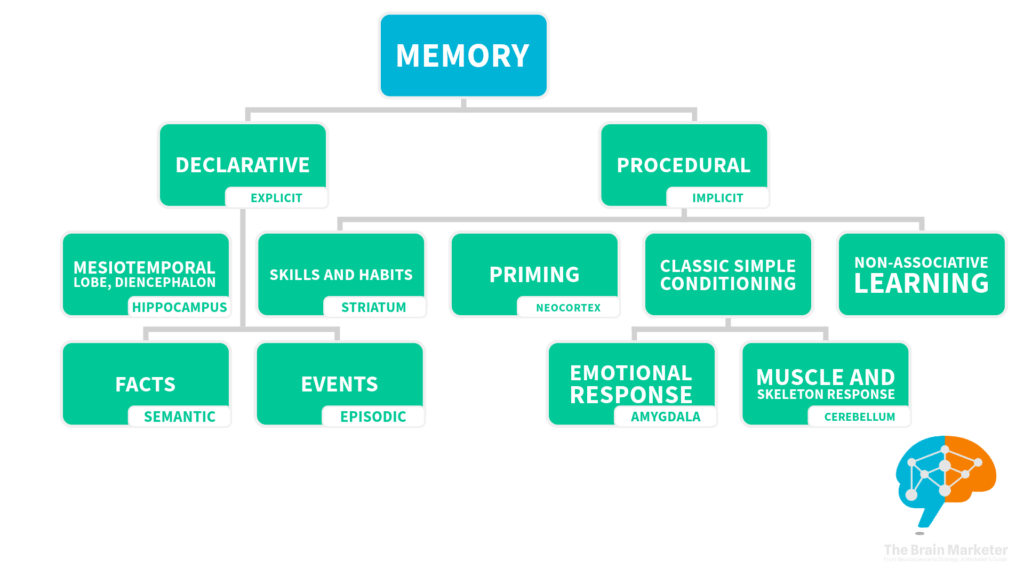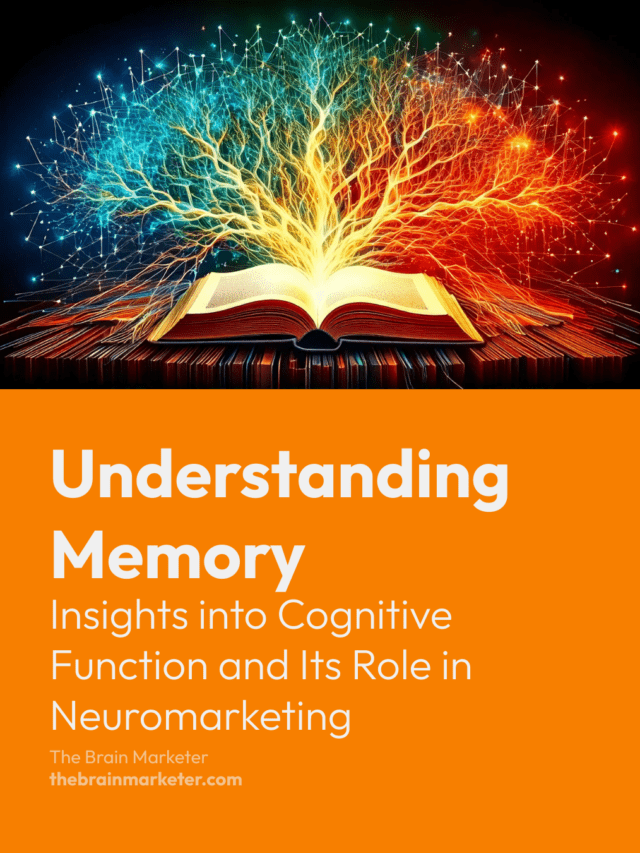Introduction
Memory is one of the most critical components of our brain’s cognitive processes. In neuromarketing, understanding how memory works is essential for developing strategies that can influence consumer behavior. Memory retention, recall, and processing all play a pivotal role in how consumers interact with brands and make purchasing decisions. The diagram accompanying this article illustrates the different forms of memory, revealing the pathways through which marketing stimuli can be stored, recalled, and acted upon.
🎙️ Unpack the Topic with this Podcast
Memory and Its Forms in Neuromarketing
Memory can be categorized into two primary types:
- Declarative Memory (explicit): This type of memory involves conscious recall of facts and events. In neuromarketing, declarative memory helps brands ensure that product information or brand messages are easily remembered. For example:
- Semantic Memory: Involves storing brand facts or general knowledge about a product (e.g., recalling the features of a smartphone).
- Episodic Memory: Tied to personal experiences or interactions with a brand (e.g., remembering a great in-store experience or a positive customer service interaction).
- Procedural Memory (implicit): This involves unconscious recall, such as the automatic recognition of logos, jingles, or slogans. This is a powerful tool in neuromarketing because repeated exposure to a brand logo or advertisement builds familiarity, which reduces consumer decision-making effort.
In neuromarketing, implicit memory is a cornerstone of effective branding, allowing consumers to automatically recall and prefer familiar brands without needing to actively remember the details.

The Role of Sleep in Memory Consolidation and Brand Recall
An often overlooked factor in consumer behavior is the role of sleep in memory consolidation. Research shows that during sleep, the brain processes and stores information, helping consumers form long-term memories. Brands that engage consumers right before sleep, such as through mobile ads or relaxing audio ads, may benefit from this cognitive reinforcement during sleep, enhancing the chance of recall the next day.
In a world flooded with advertising, neuromarketing strategies that account for memory consolidation could lead to higher brand retention and better engagement.
Neuromarketing Strategies Informed by Memory Science
Understanding how memory works enables brands to design marketing strategies that leverage both declarative and procedural memory. Here’s how:
- Declarative memory: Marketing campaigns can use memorable stories, emotive narratives, and compelling facts to strengthen explicit memory, ensuring consumers remember brand messaging.
- Procedural memory: Repetitive exposure to brand logos, jingles, or taglines strengthens implicit memory, creating automatic brand preference without the consumer needing to recall the details.
Conclusion
Memory plays an essential role in consumer behavior. Brands that tap into both explicit and implicit memory pathways can create stronger connections with consumers. By applying insights from memory science, neuromarketers can develop strategies that make their brand easier to recall, helping to influence purchasing decisions. Additionally, accounting for factors like sleep and memory consolidation could give brands an edge in how well consumers remember and engage with them.

